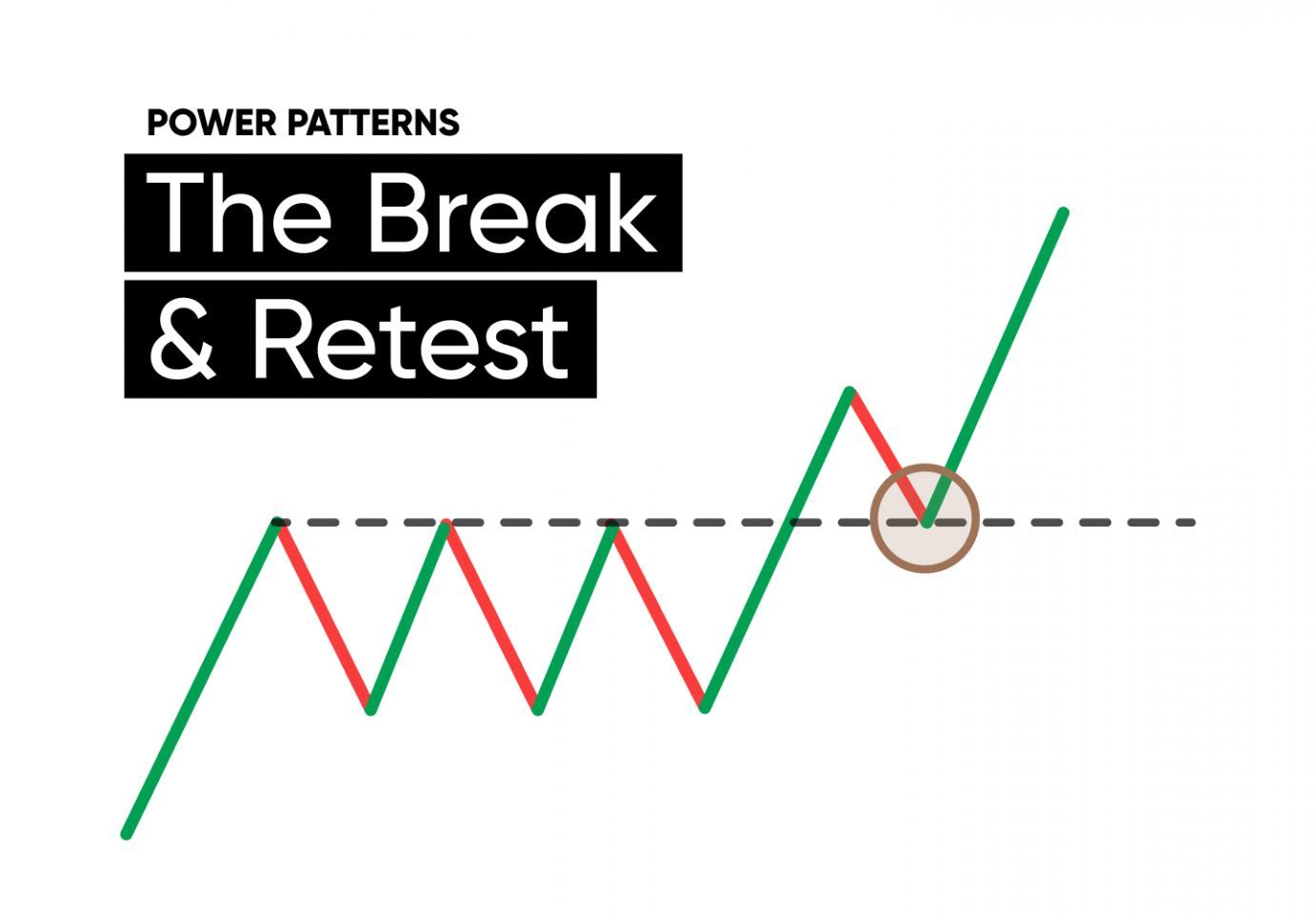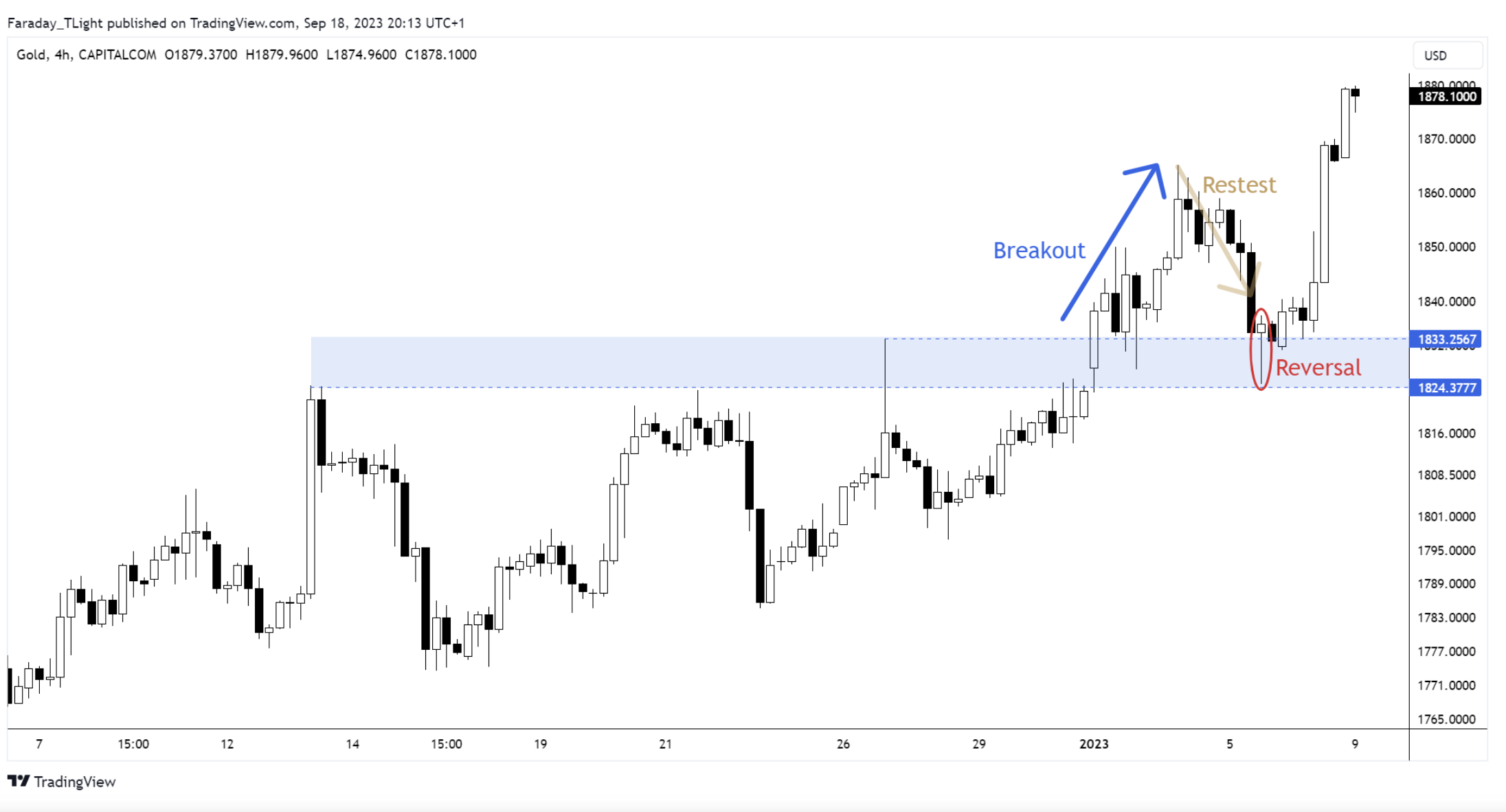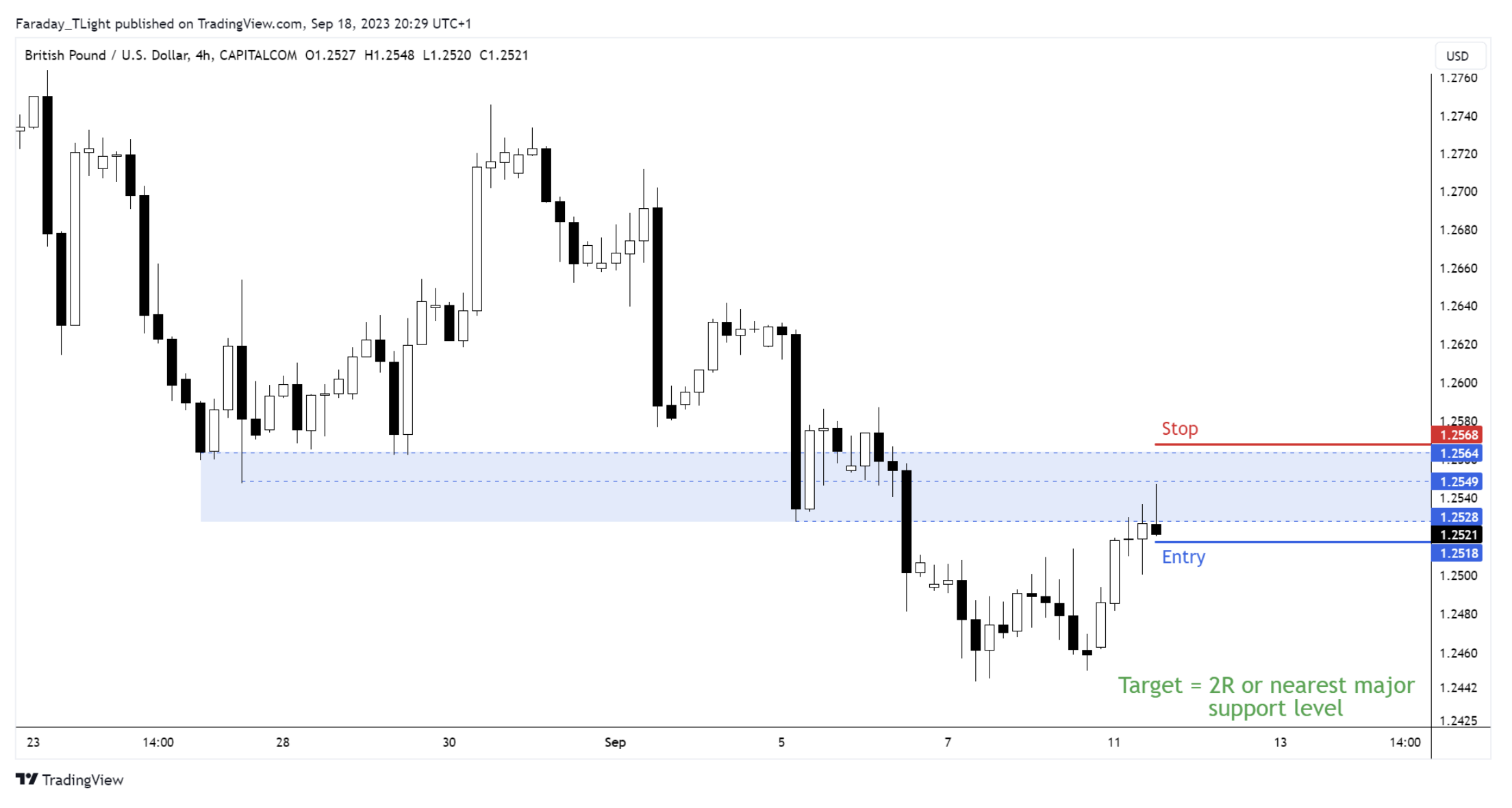How to trade the break and retest pattern
Welcome to our guide on the break and retest pattern – a structured approach to identifying and managing breakout trades.
If you’ve experienced false breakouts, this pattern can help you recognise stronger setups and improve your trading consistency.
In this lesson, we’ll explore one of the most effective price patterns that appears across all timeframes and markets.
You’ll learn:
- How to identify and anticipate the break and retest pattern
- Why this pattern is considered a reliable trading structure
- Three simple rules to increase its effectiveness
Understanding the break and retest
In essence, the break and retest pattern involves entering the market after a breakout, during its first pullback.
This pattern follows a three-step process to confirm the breakout signal. It’s based on a key principle of price action trading: once resistance is broken, it often becomes support in an uptrend; conversely, once support is broken, it can act as resistance in a downtrend.
Let’s break down the three steps:
- The breakout: the initial move where price breaches a key support or resistance level. Look for clear momentum and higher trading volume to help validate the move.
- The retest: price pulls back to the level it previously broke.
- The reversal: confirmation that broken resistance has turned into support (bullish) or broken support has turned into resistance (bearish). This confirmation often appears as a reversal candle, such as a long-tailed hammer, pin bar, engulfing candle, or multi-candle reversal formation.
The bullish break and retest

The bearish break and retest

Past performance is not a reliable indicator of future results.
How to trade the break and retest
- Identifying and anticipating: the first step is to identify key support and resistance levels on the price chart. Once recognised, monitor these areas for potential breakouts and retests. Setting price alerts can help track when the market breaks through or retests these levels.
- Entry points: the entry is based on a reversal pattern that forms during the retest of the broken level. An order may be placed above the high of the reversal candle in a bullish setup, or below its low in a bearish one.
- Stop-loss placement: for effective risk management, you may place a stop-loss below the reversal pattern and the broken resistance in a bullish scenario, or above the reversal pattern and broken support in a bearish scenario.
- Price targets: traders may set targets based on market structure (the next key level) or a defined risk-to-reward ratio. A target around twice the risk can help ensure a balanced approach when trading in line with the dominant trend.
Bullish scenario

Bearish scenario

Past performance is not a reliable indicator of future results.
Why the break and retest pattern is so useful
Breakouts from key levels can be fast and volatile, often creating a challenging trading environment.
The break and retest pattern helps introduce structure and clarity when assessing breakout signals. It offers a methodical way to confirm whether a breakout is genuine, while helping to reduce exposure to false moves.
It’s important to note that not every breakout will lead to a pullback or retest. However, over time, waiting for a retest before acting can reduce the likelihood of reacting to false signals and support more measured risk management.
Three simple rules to increase the patterns effectiveness
- Rule 1: The trend is your friend It’s a familiar phrase, but in the context of the break and retest pattern, trading in the direction of the prevailing trend is generally more effective. The pattern functions as a pullback setup, and pullbacks typically work best within established trends.
- Rule 2: The pullback should show less momentum than the breakout The breakout should display stronger momentum and volume than the pullback. If the pullback mirrors the breakout in strength or steepness, it may indicate a failed breakout.
- Rule 3: The retest should be brief Effective break and retest setups usually see momentum resume shortly after the retest. Extended consolidation around the broken level may suggest a weakening setup or lack of follow-through.
Managing risks and pitfalls
Risk management: apply sound risk management practices such as appropriate position sizing, monitoring the economic calendar, and maintaining portfolio diversification. These measures help limit exposure to unexpected market movements and potential losses.
Additional analysis: avoid relying solely on the break and retest pattern. Combine technical insights with broader market factors, including fundamentals and sentiment, to form a more balanced perspective.
Any material provided is for information purposes only and does not constitute investment advice. Opinions expressed are not recommendations by Capital Com or its representatives. No warranty is given regarding the accuracy or completeness of the information provided. Use of this material is entirely at your own risk.
FAQ
What is the break and retest pattern?
The break and retest pattern is a price action structure where the market breaks through a key support or resistance level and then briefly returns to retest that level before continuing in the breakout direction. It’s used to help confirm breakout strength and identify potential areas of interest on the chart.
How can I identify a break and retest pattern?
Look for a clear breakout with strong momentum, followed by a measured pullback to the broken level. Confirmation may come from reversal candles or price behaviour suggesting the previous level has switched from support to resistance, or vice versa.
Does every breakout include a retest?
No. Not all breakouts return to retest the broken level. Some continue in the same direction without retracing. The pattern can be more effective when applied patiently to setups that show both a clear breakout and a retest.
Why is risk management important when trading this pattern?
Even when a break and retest setup appears clear, market conditions can change quickly. Using tools such as stop-losses, position sizing, and economic calendar checks can help limit exposure to unexpected moves and maintain disciplined trading behaviour.
Can the break and retest pattern be used across all markets and timeframes?
Yes. The pattern’s structure can be observed across multiple asset classes and timeframes, from short-term charts to longer-term analysis. However, effectiveness may vary depending on volatility, liquidity, and overall market conditions.